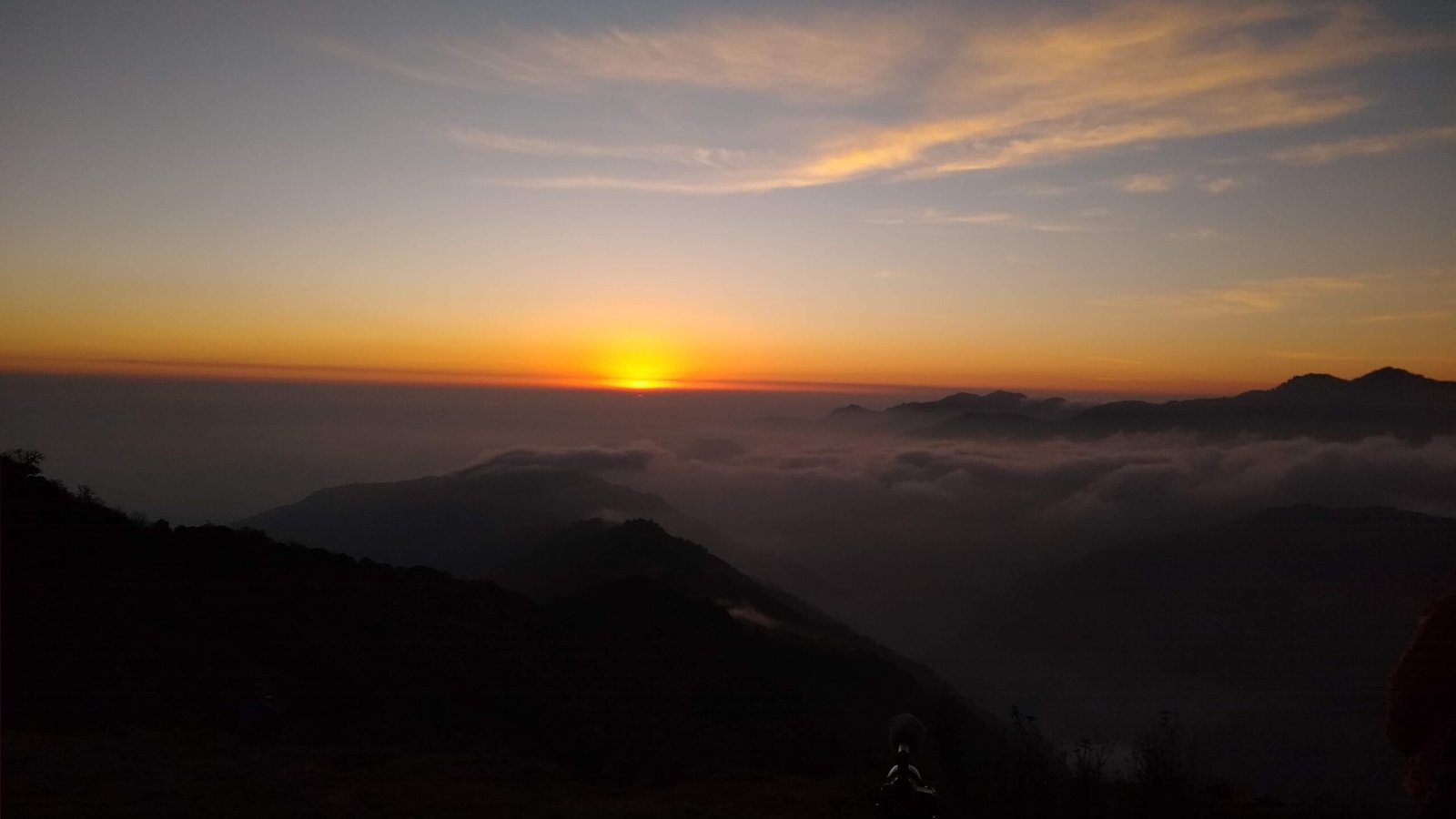Autumn is one of the best seasons to trek in the Himalayas. As the monsoon season retreats, the skies become crisper and drier, ideal for clear views of the majestic Himalayas. The meadows take on a golden hue this season, giving a certain vibrancy to the landscape. The temperatures are comfortable – pleasant in the day, chillier in the evenings but won’t get truly cold until winter.
If you are planning on making the most of trekking in autumn ,we have listed 5 best Himalayan treks . All of these suggestions fall under the easy-moderate to difficult grade of treks. They require some preparation, but are accessible to beginners as well as seasoned trekkers who want to enjoy an autumn in the Himalayas.
Deoriatal-Chandrashila
Number of days: 6 days
Highest Altitude: 3675 metres
Level: Easy
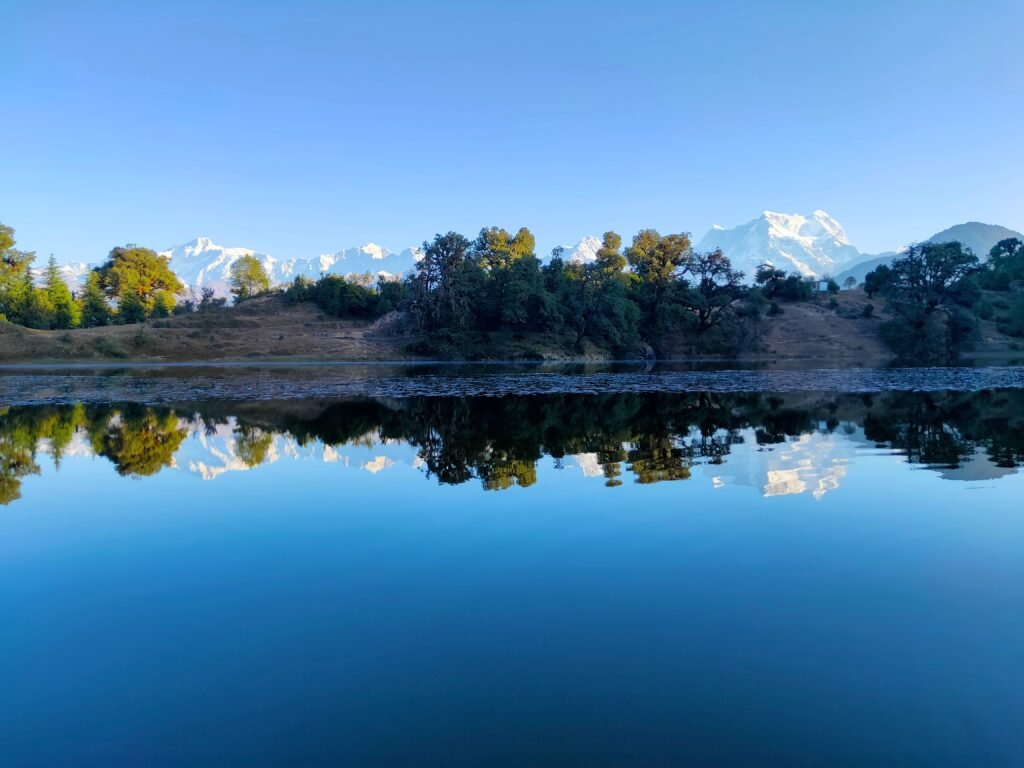
Deoriatal Chandrashilla trek in Uttarakhand is perfect for beginners. This beginner-friendly trek takes you through dense forests and lush meadows like Rohini Bugyal and Syalmi and finishes off with a summit climb. While you can see Chaukhambha for most of the trek, the view from Chandrashila is absolutely grand.
Peaks you can seeFrom Chandrashila summit you can see:
- Nanda Devi
- Trishul
- Nanda Ghunti
- Dronagiri
- Hathi Parvat
- Gauri Parvat
- Kedarnath
- Thalaysagar
- Chaukhambha
- Kedar Dome
- Mandani Parvat
- Janhukut
The sunset from Syalmi meadows is another highlight. It is not to be missed. The summit climb to Chandrashila has an added bonus – you see one of the highest Shiva temples in the world, the Tungnath temple..
Tungnath Temple is a stop-over point on the way to the Chandrashila summit and sees a lot of footfall from trekkers and pilgrims alike. Pilgrims go to the Tunganath temple because it is one of the Panch Kedars. Panch Kedars are the five temples believed to be built by Pandavas to atone for their bloodshed in the Kurukshetra war.
The sunset from Syalmi meadows is another is not to be missed. The summit climb to Chandrashila has an added bonus – you see one of the highest Shiva temples in the world, the Tungnath temple..
The story goes that Pandavas were wandering through the Garhwal Himalayas, looking for Shiva. However, Shiva, displeased by their actions in the Kurukshetra war, sought to hide from them. It was near Guptakashi that Bhima found Shiva – in the form of a bull. To prevent him from evading them again, Bhima caught hold of the bull’s tail. However, the bull disappeared into the ground and reappeared in parts in five places: the hump in Kedarnath, the arms in Tungnath, the face in Rudranath, the stomach in Madhyamaheshwar and hair in Kapleshwar.
Sandakphu
Number of days: 6 days
Altitude: 3650 metres
Level: Moderate
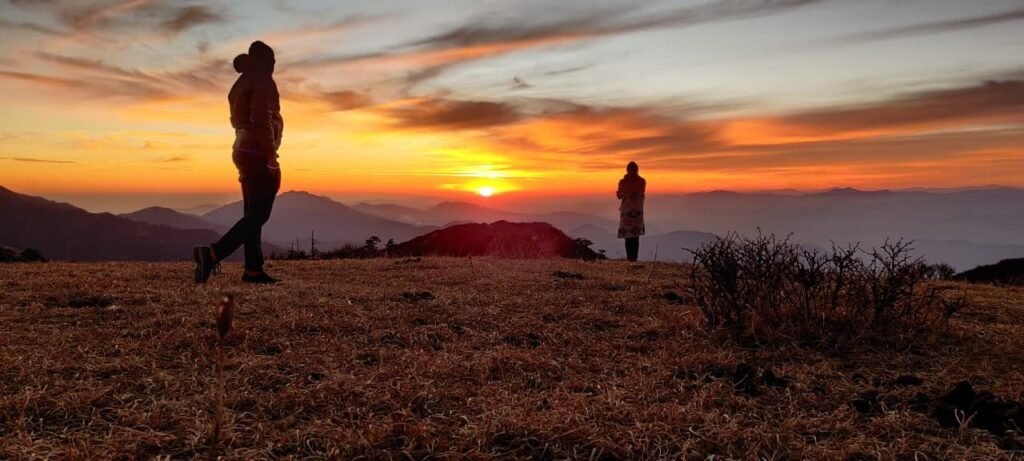
Sandakphu is the best autumn trek for sunrise and sunsets.The sun’s glow on the entire Kanchenjunga massif and the distant Everest, Lhotse Makalu as you stand above clouds is an experience unlike any other. To see the full length of Kangchenjunga, dubbed the “Sleeping Buddha” because of its shape, itself is a blessing. Most often, to see peaks of that height, you need to do a strenuous trek. You can see the Sleeping Buddha from Darjeeling!
This part of Himalayas is even greener than Uttarakhand and Himachal, and has a distinct touch of Nepali culture.
Peaks you can see from Sandakphu trek:
- Kangchenjunga
- Pandim
- Kabru Dome
- Goecha Peak
- Simvo
- Everest
- Lhotse
- Makalu
- Chomolhari
Sandakphu is one of the best treks to see sunrise and sunset. What is even more unique about the Sandakphu trek is that the trail hugs the India-Nepal border, so you will be walking in and out of India and Nepal! This is also a teahouse trek, which is rare in India.
Annapurna Base Camp
Number of days: 10 days
Highest Altitude: 4130 metres
Level: Moderate
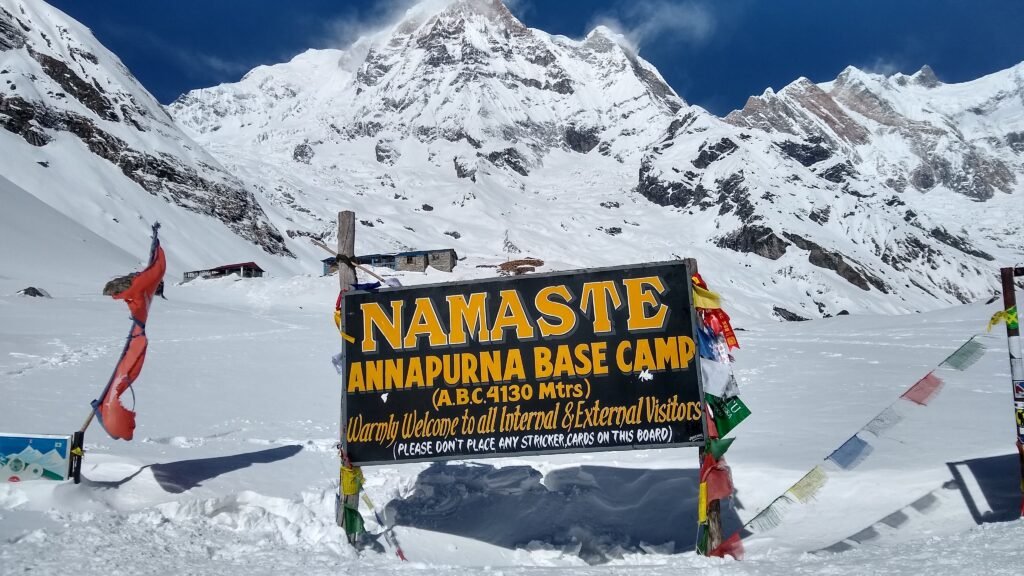
Annapurna Base Camp trek has one of the best base camps there is. The Annapurna base camp is a crater where you are surrounded by all big mountains – Annapurna I, Annapurna III, Machapuchare and Gangapurna. Unlike most treks where you have to hike to a certain point to witness a sunrise, here, all you have to do is step out of your teahouse. On this trek, you get to explore two base camps – Annapurna Base Camp and Machapuchare Base Camp.
Peaks you can see on Annapurna Base Camp trek:
- Annapurna South
- Annapurna I
- Annapurna III
- Annapurna Fang
- Khangsar Kang
- Hiunchuli
- Tent Peak
- Gangapurna
- Machapuchare
Annapurna I was the first 8,000-meter peak to be summited. In 1950, French climbers Maurice Herzog and Louis Lachenal became the first to reach its summit, marking a historic moment in mountaineering.
The starting and ending point of the trek – Pokhara- is a good place to explore. It has quite a range of activities for you to do and is considerably quieter than crowded Kathmandu.
Khopra Danda Trek
Number of days: 10 days
Highest Altitude: 4663 metres
Level: Moderate
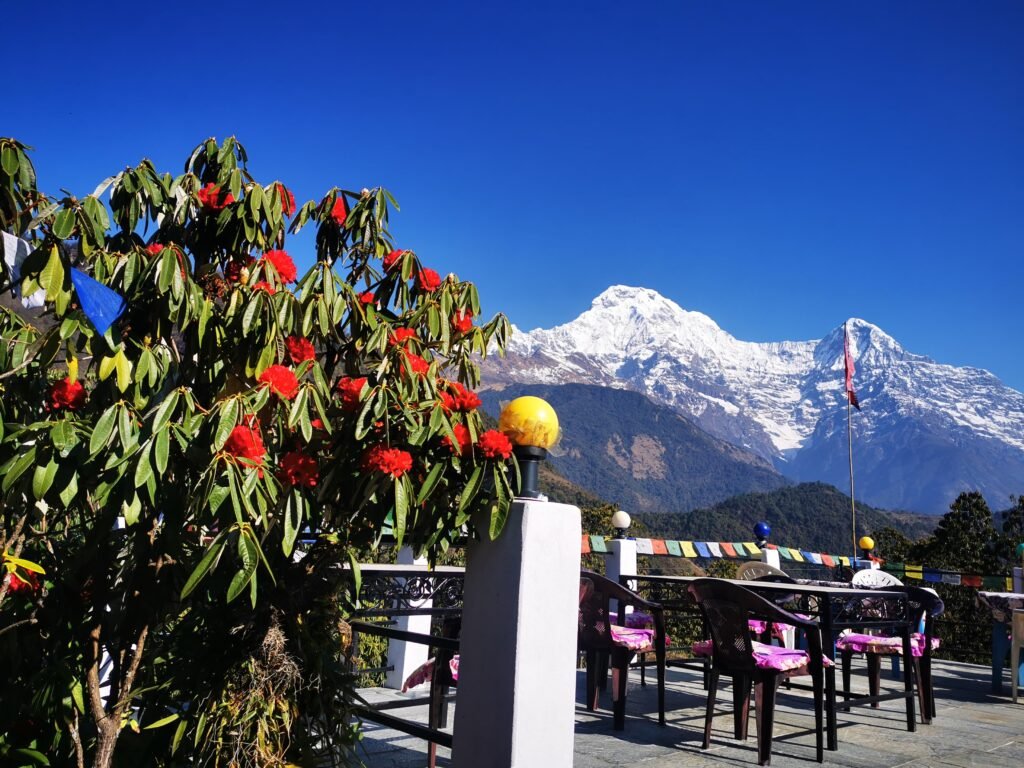
Khopra Danda is a perfect trek to do in autumn. From the Khopra ridge, you can see the entire Annapurna range. Dhaulagiri in particular dominates the skyline.. As it is a ridge walk, sunrise and sunsets on this trek are beautiful. It is of our trek leader Gurdit’s personal opinion that sunsets are even more beautiful because of how the setting sun casts vivid colours on the mountains. It is also a largely unexplored trek, so this is the trek to do in Nepal if you want to avoid crowds.
Peaks you can see on Khopra Danda trek:
- Dhaulagiri
- Annapurna I
- Annapurna II
- Annapurna III
- Annapurna South
- Nilgiri
- Machapuchare
- Hiunchuli
Khayar lake, lying at the foot of Annapurna South, is another attraction on this trek. On a clear day that autumn gives you, you can see the reflection of the mountain in this alpine lake’s waters. The Khopra ridge trek ends at Swanta village, which is a picture perfect place to end the trek at.
Goechala
Number of days: 10 days
Highest altitude: 4600 metres
Level: Difficult
Like the Roopkund trail, Goechala is a very old trek. This trek is specifically done for the close up view of Kangchenjunga, the third highest mountain in the world. You see the southern face of the massif at many different points on the trek. Due to restrictions in Sikkim, we don’t go all the way to Goechala Pass – the highest point we reach is Viewpoint I. The sunrise from there makes many trekkers emotional.
This is also a trek where you get a variety of terrain: from forests to meadows to raw alpine regions. It is of no wonder that this is the case – the trek falls under the Kangchenjunga National Park, which is a UNESCO World Heritage site.
Peaks you can see on Goechala trek:
- Pandim (6,691 m)
- Tenzingkhang
- Jopuno
- Kabru (7,412 m)
- Simvo
- Ratong
The panoramic view of Kangchenjunga, Pandim and Kabru from Dzongri Top is exquisite.
The Goechala trail is also an old trading route between India, Bhutan and Tibet.
The trek also starts from a place called Yuksom, which was known as the first capital of Sikkim. The name Yuksom means, “meeting place of three lamas”. The three lamas had apparently met in Yuksom and decided the course of Sikkim’s future. In Yuksom, you get to witness the culture of the Lepcha people, who have preserved their traditional way of life.


